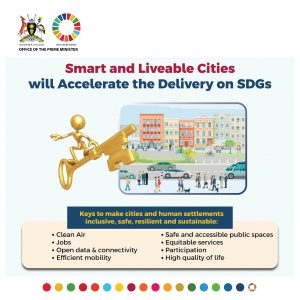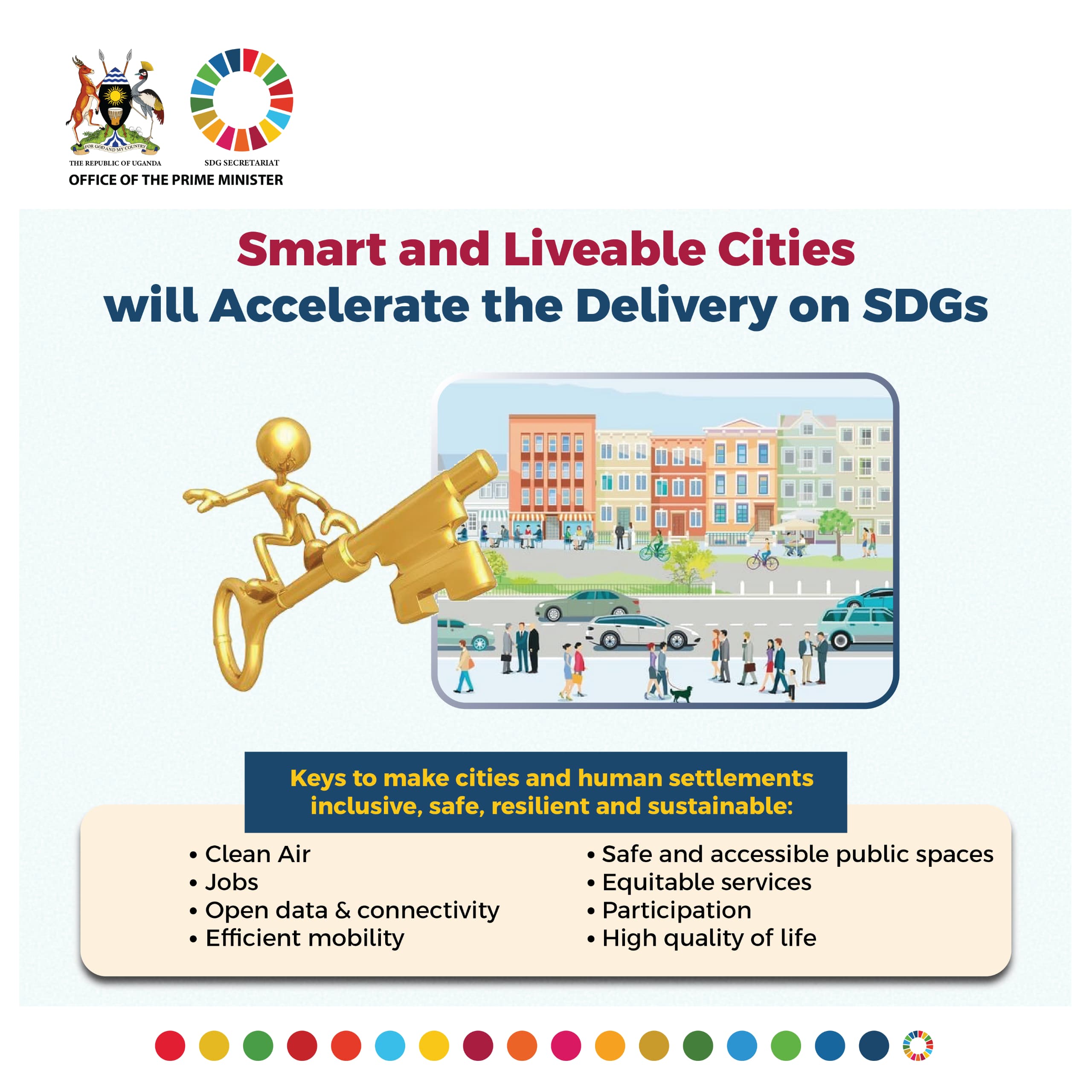Smart and liveable cities will accelerate the Delivery of SDGs.
Today, smart urbanization is of great importance in the realization of the economic, environmental, and social goals of the United Nations.
Smart cities;
- help achieve Sustainable Development Goal 11, also known as the Urban SDG by providing the infrastructure and conditions for citizens to contribute to and benefit from a sustainable urban development.
- reduce greenhouse gas emissions by reducing electricity and heat production, and by reducing emissions in the transport sector.
- improve the quality of life for citizens by using smart technology to reduce costs, improve the environment, and enhance the quality of life.
- address social needs and ensure that housing and urban services are high-quality and affordable.
- cater for the needs of the vulnerable and those with disabilities.
- improve the efficiency of urban services and operations, and solve economic problems like inflation and rising energy costs.
The urban population of Uganda has since increased from 12% in 2012 to 26.5 in 2021 and is projected to increase to 50% by 2050. To promote and improve urban infrastructure and decentralize development, the Government elevated 15 municipalities to city status, in addition to the capital city of Kampala. Ten of these cities, including Arua, Mbarara, Gulu, Jinja, Fort Portal, Mbale, Masaka, Lira, Soroti, and Hoima, became operationally effective on July 1, 2020.
Since the 2020 VNR, the potential benefits of the phenomenon of rapid urbanisation have become more apparent, necessitating a deliberate strategy to elevate the fast-growing and viable urban settlements to higher and better-planned entities. While the proportion of the population living in slums has consistently declined from 80.9% in 2000 to 54% in 2020, Uganda has not met its 44% NDP III urbanisation target for 2023.
As part of Vision 2040, the country has put in place a number of interventions aimed at re-imagining urbanisation, including legislation, integrated physical planning and strict development control for of urban sprawling, adopting well-planned, high-density settlement for Kampala and medium-density settlement for the regional and strategic cities through construction of high-rise buildings. To ensure the sustainability of urban settlements, Uganda has taken the following steps:
- The Government launched National Vision 2040, utilising urbanisation as a primary catalyst for structural transformation. This initiative established nine strategic cities: five are oil, tourism, industrial, and mineral strategic cities, and four are regional in nature.
- The cabinet approved the Government’s National Physical Development Plan (NPDP) in 2023, which aims to ensure balanced development. The National Urban Policy 2017 serves as a comprehensive framework to achieve the SDGs, while the New Urban Agenda and Agenda 2063, the Urban Roads Design Manual (2023), the Integrated Urban Transport Strategy (2022), and the National Smart Slum Upgrading, Prevention Strategy, and Action Plan (2023) further enhance the NPDP.
- City/Municipal Development Forums have been created in 10 cities and 12 municipalities countrywide. These provide regular and democratic platforms for direct civil society participation in urban planning and management.
- Twenty-one garbage collection trucks have been procured for the cities and municipalities to improve waste management for proper disposal of 56% of the solid waste produced in urban areas. The acquisition of weigh bridges also has facilitated data collection on solid waste and the Government is in the process of developing a comprehensive waste management policy.
- The Government designed and implemented the Uganda Support to Municipal Infrastructure Development (USMID) Project 2015–2023 and is in process of developing and implementing second phase 2024-28. The USMID Project is a special-purpose vehicle for the attainment of SDG 11. The Government also launched and implemented the Building Industry Management System to promote and ensure planned, decent and safe building structures.
- The Government commenced the tarmacking and paving of 1,549km of the 19,959km of urban roads. The revised slum upgrading strategy is being implemented with support from UN-Habitat and the Greater Kampala Economic Development Strategy 2020.
- The Government adopted several policies to protect the sites that are significant to cultural heritage, including the Tombs of Buganda Kings at Kasubi, Rwenzori Mountains National Park and Bwindi Impenetrable National Park. Other features include six cultural practices and expressions of intangible heritage, as well as two biosphere reserves, and the UNESCO’s university cooperation programme.
Despite making progress in promoting sustainable development practices, there is still room for improvement and growth. Areas for improvement include updating outdated regulatory frameworks, stringent enforcement of policies and guidelines, capacity building to enhance technical capabilities, particularly for LG officials, public involvement and participation in planning, and increased resource mobilisation and allocation.

The Government will continue to:
- Invest in the technical expertise of local government and ministry officials to empower them to plan, design, and implement development projects more effectively.
- Provide more opportunities for engagement in urban planning and management procedures and monitor progress.
- Promote collaboration among MDAs, the private sector, and local communities to achieve a comprehensive and inclusive approach to sustainable development.


